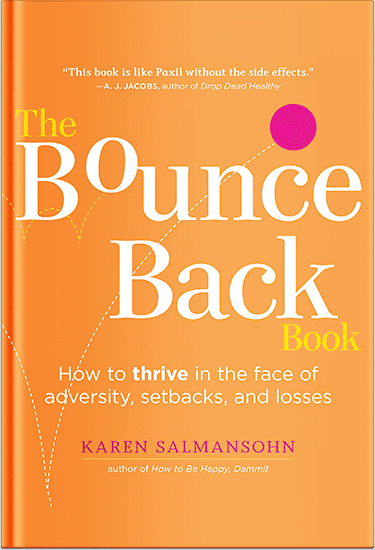 Choosing between a chest freezer and an upright freezer can be tricky. I’m someone who loves to cook healthy meals so I looked into both options and found some key differences.
Choosing between a chest freezer and an upright freezer can be tricky. I’m someone who loves to cook healthy meals so I looked into both options and found some key differences.
Chest freezers, especially a glass top chest freezer, are better at keeping food frozen longer and use less energy, while upright freezers offer easier organization and take up less floor space.
Chest freezers have a lid that opens from the top. This design keeps cold air inside when you open it. Upright freezers have a door that swings open like a fridge. They’re great for small spaces and make it easy to see what’s inside.
I’ve found that chest freezers are often cheaper to buy and run. But upright freezers can be more convenient for everyday use. Your choice depends on your space, budget, and how you plan to use it.
Key Takeaways on Chest Freezer vs. Upright Freezer
 Chest freezers are more energy-efficient and keep food frozen longer
Chest freezers are more energy-efficient and keep food frozen longer- Upright freezers offer better organization and use less floor space
- Your choice depends on your specific needs, space, and budget
Design and Installation
Chest and upright freezers have key differences in how they’re designed and installed. These affect how much space they take up and how easy they are to use day-to-day.
Space Requirements
Chest freezers need more floor space but make better use of vertical room. I’ve found they work well in garages or basements with open areas. Upright freezers have a smaller footprint, similar to a fridge. They fit nicely in kitchens or tight spaces.
Chest freezers are wider and deeper. A typical 15 cubic foot chest freezer is about 33 inches deep and 50 inches wide. Uprights are taller but narrower. A 15 cubic foot upright is around 28 inches deep and 30 inches wide.
Accessibility and Convenience
Upright freezers are easier to organize and access food from. They have shelves and door storage like a fridge. I can quickly grab items without digging. Chest freezers require more reaching and lifting to get to food at the bottom.
The top-opening design of chest freezers keeps cold air in when opened. This helps food stay frozen longer during power outages. Upright freezers lose more cold air each time the door opens.
Chest freezers need manual defrosting. Ice builds up over time and must be scraped off. Many upright models have auto-defrost, which is more convenient but uses more energy.
Performance and Maintenance
Chest and upright freezers differ in how they perform and how much care they need. These differences can affect your energy bills and how long the freezer lasts.
Defrosting Methods
Most chest freezers need manual defrosting. I have to turn off the freezer, remove all the food, and let the ice melt. It’s a bit of work, but I only need to do it once or twice a year. Some newer models have a drain to make this easier.
Upright freezers often have auto-defrost. This means I don’t have to do anything – the freezer takes care of frost on its own. It’s very convenient, but it uses more energy. Some upright freezers still need manual defrosting, so I always check before buying.
Frost-free models are the easiest to maintain. They prevent frost buildup completely. I never have to defrost these, which saves me time and effort.
Energy Efficiency and Energy Bill Impact
Chest freezers are usually more energy-efficient. When I open the lid, cold air stays inside because it’s heavier than warm air. This means the freezer doesn’t have to work as hard to stay cold.
Upright freezers lose more cold air when I open the door. They use more energy to cool down again after each opening. This can lead to higher energy bills over time.
Auto-defrost and frost-free models use more energy than manual defrost ones. But they save me time on maintenance. I have to weigh the convenience against the extra cost on my energy bill.
Lifespan and Durability
Chest freezers often last longer than upright ones. They have simpler designs with fewer parts that can break. I can expect a chest freezer to last 15-20 years with good care.
Upright freezers typically last 10-15 years. They have more moving parts and electronic components that can wear out. But they’re easier to clean and organize, which can help them last longer.
Regular maintenance helps both types of freezers last longer. I make sure to clean the coils, check the door seals, and keep them at the right temperature. This can add years to their lifespan and save me money in the long run.
Storage Capabilities and Organization
Chest and upright freezers have different strengths when it comes to storage. I’ll explore their capacities and how well they preserve food.
Capacity and Bulk Storage
Chest freezers excel at bulk storage. Their wide, open design lets me fit large items easily. I can stack bulky foods like turkeys or big cuts of meat. A 22-cubic-foot chest freezer uses about 12 square feet of floor space.
Upright freezers take up less room. A 22-cubic-foot upright only needs about 6 square feet. But they hold less overall. The shelves and door storage limit bulky items.
For make-ahead meals, chest freezers win. I can store more containers flat. Uprights work better for smaller households. The shelves make grabbing items quick.
Food Preservation and Preventing Freezer Burn
Chest freezers keep food frozen longer. When I open the lid, cold air stays inside. This helps prevent freezer burn. The steady temperature is great for long-term storage.
Upright freezers let cold air escape when opened. Foods near the door thaw faster. But they’re easier to organize. I can group similar items on shelves. This makes rotation simpler.
To prevent freezer burn in either type:
• Use airtight containers
• Remove excess air from packages
• Label and date items
• Don’t overfill the freezer
Both styles work well if I follow good storage practices. My choice depends on my space and needs.
Cost Considerations and Additional Features
Choosing between chest and upright freezers involves weighing price points and extra features. I’ll break down the key factors to help you decide which option gives you the best value for your budget and needs.
Price Range and Value for Money
Chest freezers are generally cheaper than upright models. I’ve found that basic chest freezers start around $200, while entry-level upright freezers begin at $500. Mid-range chest freezers cost $300-$600, and upright models in this tier run $700-$1000. High-end chest freezers top out around $1000, but premium upright freezers can exceed $2000.
Chest freezers offer more storage space per dollar. A 22-cubic-foot chest freezer costs less than an upright with the same capacity. If you need lots of freezer space on a tight budget, a chest freezer is your best bet.
Warranty and Added Functionality
Most freezers come with a 1-year parts and labor warranty. Some brands offer longer coverage on certain components. I recommend looking for at least a 5-year warranty on the compressor, which is costly to replace.
Upright freezers tend to have more bells and whistles. Common features include:
- Auto-defrost
- Digital temperature controls
- Door alarms
- Interior lighting
- Adjustable shelves
Chest freezers are simpler but have some perks:
- Removable baskets for organization
- Power-on indicators
- Mechanical temperature controls
I’ve noticed upright freezers lose cold air faster when opened. Chest freezers keep food frozen longer during power outages – up to 3 days versus 1 day for uprights.
P.S. Before you zip off to your next Internet pit stop, check out these 2 game changers below - that could dramatically upscale your life.
1. Check Out My Book On Enjoying A Well-Lived Life: It’s called "Your To Die For Life: How to Maximize Joy and Minimize Regret Before Your Time Runs Out." Think of it as your life’s manual to cranking up the volume on joy, meaning, and connection. Learn more here.
2. Life Review Therapy - What if you could get a clear picture of where you are versus where you want to be, and find out exactly why you’re not there yet? That’s what Life Review Therapy is all about.. If you’re serious about transforming your life, let’s talk. Learn more HERE.
Think happier. Think calmer.
Think about subscribing for free weekly tools here.
No SPAM, ever! Read the Privacy Policy for more information.
One last step!
Please go to your inbox and click the confirmation link we just emailed you so you can start to get your free weekly NotSalmon Happiness Tools! Plus, you’ll immediately receive a chunklette of Karen’s bestselling Bounce Back Book!


 Choosing between a chest freezer and an upright freezer can be tricky. I’m someone who loves to
Choosing between a chest freezer and an upright freezer can be tricky. I’m someone who loves to  Chest freezers are more energy-efficient and keep food frozen longer
Chest freezers are more energy-efficient and keep food frozen longer